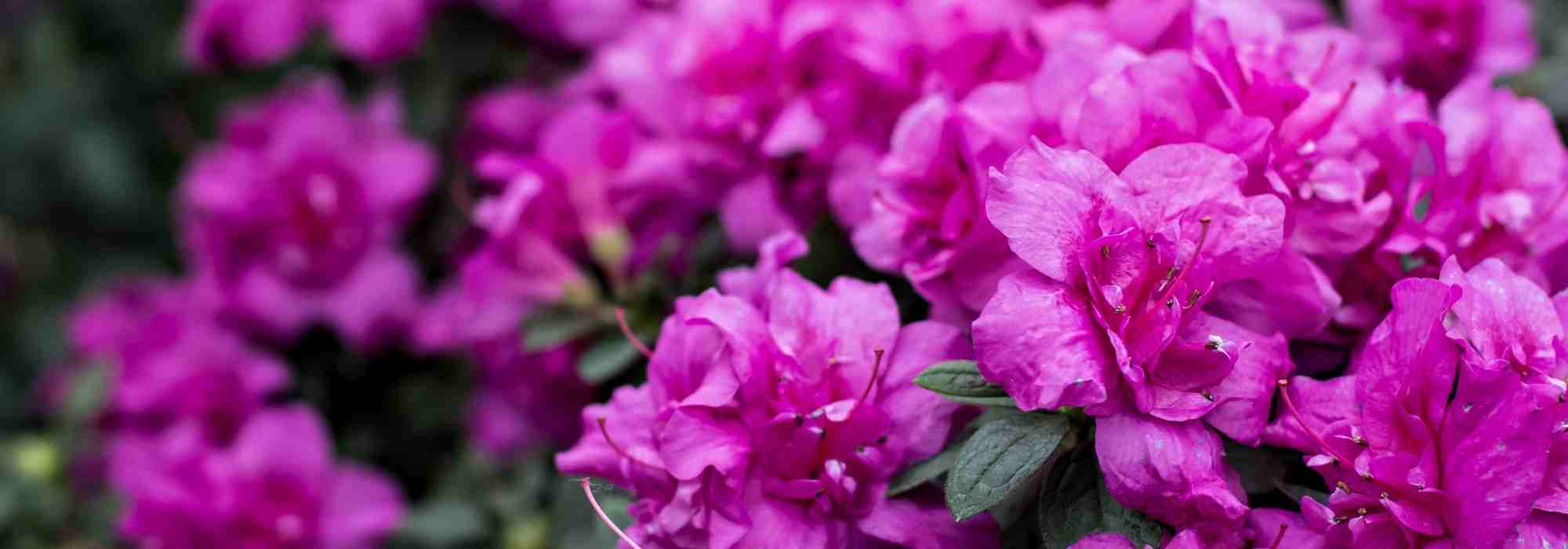
To grow an azalea in a pot
Everything you need to know to successfully grow on your balcony or terrace
Contents
Azaleas, thanks to their compact, bushy pruning, are particularly well suited to growing in a pot. With spring flowering, an azalea in a pot will wonderfully brighten a terrace or balcony situated in partial shade or shade. Discover how to grow and care for an azalea in a pot.
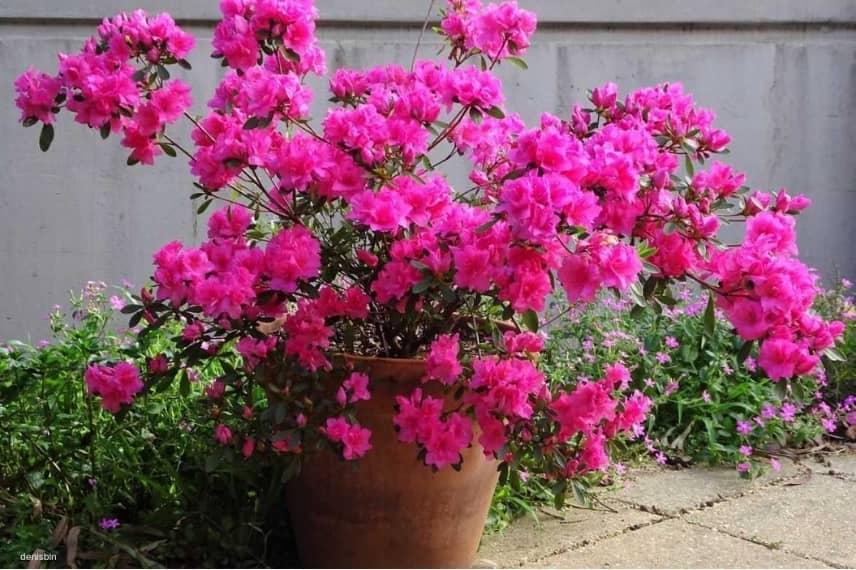
azalea in a pot
Which pot should I choose for my azalea?
For growing potted azalea, choose a pot 40 to 50 cm in diameter. Depending on azalea variety and spread, you can repot them over the years into larger pots, bearing in mind that their growth is slow. At ripeness potted azaleas measure between 50 and 70 cm in height. Choose a pot for it, preferably terracotta. Finally, potted azalea needs the substrate to remain moist while being well drained.
Read also
Chinese azaleas: the best varietiesWhen and how should I plant my azalea in a pot?
When to plant my azalea in a pot?
Planting azalea, like repotting, is best carried out in spring or autumn. It is outside periods of frost and extreme heat that its hardening will be easiest.
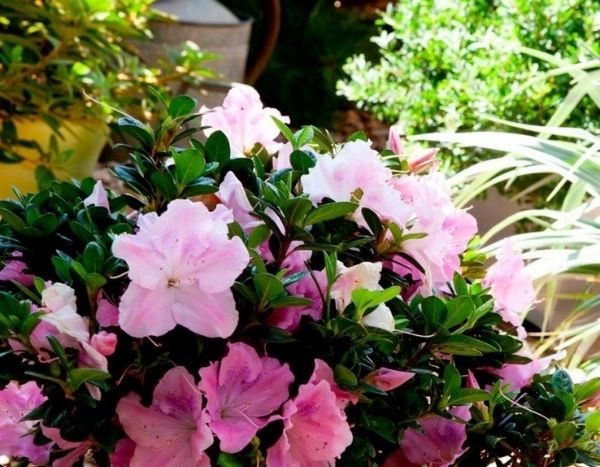
How to plant my azalea in a pot and which substrate to use?
- Azalea prefers a light, rich substrate. Place at bottom of pot a layer of pumice to improve drainage.
- Then add a mix of one third garden soil if non-calcareous, one third potting compost and one third heather soil
- Remove azalea from pot
- Gently tease out small roots around rootball if they are numerous and dense.
- Soak rootball for 10 minutes.
- Plant azalea in pot, firming soil to ensure good contact between soil and roots
- Azalea likes its base well protected. Alternatively, you can use a mulch of pine bark, pine needles or fern leaves. You can also plant at base of azalea a heather.
- Water to keep substrate moist (using non-calcareous water).
Discover other Rhododendron and Azalea
View all →Available in 1 sizes
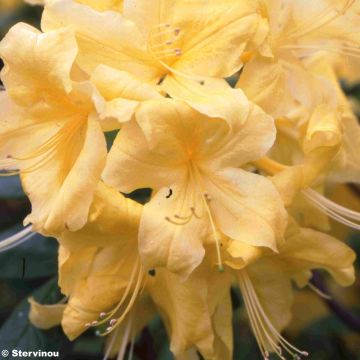
Available in 1 sizes
Available in 1 sizes
Available in 3 sizes
Available in 1 sizes
Available in 1 sizes
Available in 1 sizes
Available in 1 sizes
Available in 1 sizes
Available in 1 sizes
Which azalea should I choose for growing in pots?
If all azaleas can be grown in pots, opt primarily for varieties with moderate growth. They are perfect on a balcony or terrace! However, there are some differences between azalea varieties that may influence your choice.
Japanese azaleas are notable for their evergreen foliage and pretty rounded bush habit. Chinese azaleas, also called azalea mollis, have deciduous foliage that will provide a lovely autumn colour change and richer, scented flowering in spring. These two varieties prefer part shade or shade. For a relatively sunny position, favour ENCORE hybrid azalea varieties: ENCORE azalea.
Note that among these varieties there is a multitude of enchanting colours and we have selected some that will adapt wonderfully to pots on your terrace:

Rhododendron Blaauws pink - Kurume Azalea
- Flowering time May, June
- Height at maturity 90 cm
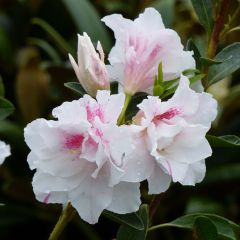
Japanese azalea White Prince
- Flowering time May, June
- Height at maturity 70 cm
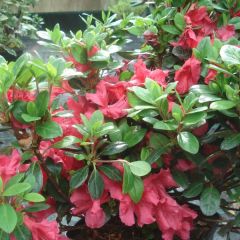
Japanese azalea Johanna
- Flowering time May, June
- Height at maturity 60 cm
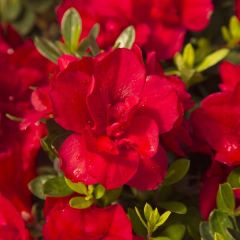
Japanese azalea ENCORE Bonfire
- Flowering time May to November
- Height at maturity 80 cm
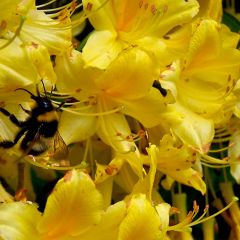
Azalea Lingot d'Or
- Flowering time May, June
- Height at maturity 1,50 m
→ Find other Chinese azalea varieties here
→ Find other Japanese azalea varieties and ENCORE hybrid azaleas here
Read also
How to choose an azalea?Where should I place my potted azalea?
Potted azaleas are particularly suited to north- and west-facing aspects. A semi-shaded position is preferred and encourages abundant flowering, taking care to avoid scorching early-afternoon sun. Shaded positions are also acceptable if light is plentiful. If your terrace receives sun during the day, only ENCORE® hybrid azaleas will be suitable, provided you are diligent with watering. An east-facing aspect should be avoided if possible: morning sun combined with cold winter nights can scorch flower buds and leaves. Place your azalea in a sheltered position to preserve abundant flowering. Note that azaleas will thrive in oceanic, temperate continental and mid-altitude regions. In Mediterranean regions, opt for other types of plants better adapted to the climate.
How do I care for my potted azalea?
Watering potted azalea
Potted azalea needs to keep its substrate moist. Water regularly with rainwater. Do not use tap water, which is often too hard for azalea and can cause yellowing of leaves, a sign of chlorosis. Apply a mulch of pine bark or pine needles to reduce watering frequency and help retain soil moisture for longer. In dry weather, spray foliage in the evening to prevent possible attacks by red spider mites.
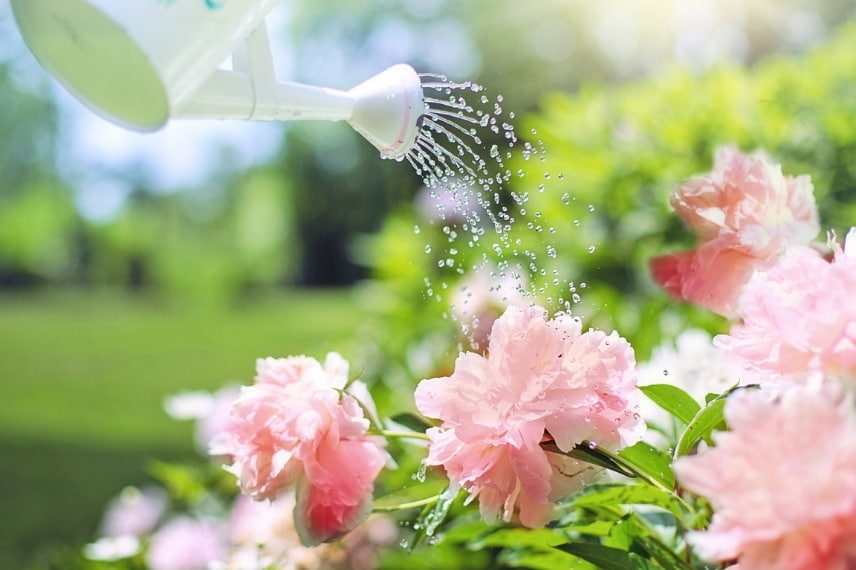
When to repot a potted azalea?
Prefer repotting every 2 to 3 years in autumn to renew azalea substrate.
What feeds for my potted azalea?
Apart from repotting, plan a feed once or twice a year, in autumn and spring. This can be in the form of a fertiliser for ericaceous plants or a handful of well-rotted manure at the base, dead leaves and mulch.
Potted azalea in winter
Japanese and Chinese azaleas can remain in a pot over winter, under certain conditions :
- Place the pot in a sheltered spot.
- Mulch the base properly: a layer 10–15 cm thick if mulch is pine bark or pine needles, 15–20 cm thick if mulch is dead leaves.
- If severe frosts are forecast: place a winter fleece around the plant. This fleece should be temporary for an azalea with evergreen foliage, so remove it as soon as frosts stop. You can also wrap a winter fleece or bubble wrap around the pot to protect the roots and the pot at the same time.
- Remember to water your azalea, but not excessively if there is no rain or if you have placed a winter fleece.
How to prune a potted azalea?
Azalea is a bush that does not need pruning. You can remove spent flowers if desired. If you still wish to prune the azalea, we recommend doing so after flowering.
Possible diseases and pests :
- My azalea’s leaves are yellow: it is suffering from chlorosis. This is an iron deficiency due to watering with hard water or calcareous soil. Water the plant with a dilution of anti-chlorosis product or with a 10% dilution of nettle manure, or a 20% dilution of horsetail manure in rainwater.
- My azalea has red spider mites: they pierce leaves in hot, dry weather. As prevention, spray foliage in the evening during heatwaves. In case of infestation, spray a garlic decoction onto foliage.
- Aphids: they can attack young leaves of azalea. Spray a mixture of water with 10% liquid black soap.
- Vine weevils: these beetles notch the edges of leaves. Damage is more unsightly than dangerous. Over time, ground beetles, gardener’s friend, will naturally limit their population. It is also possible to use a natural treatment based on nematodes.
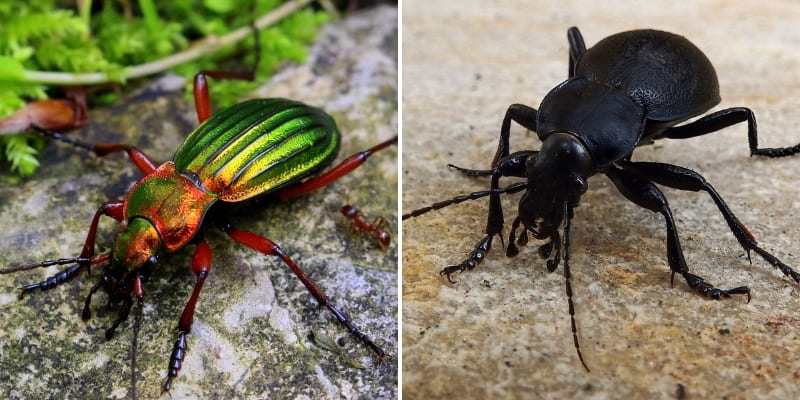
Ground beetles, gardener’s friend! They devour vine weevils and so protect your plants
- Azalea moth caterpillars: they can devour shoots. In case of overpopulation treat with pheromone traps that capture male moths or with biological insecticide Bacillus thuringiensis (BT).
- Fungi: honey-coloured armillaria and Phytophthora appear when roots are asphyxiated by excess water in winter or when soil is excessively compacted. Unfortunately, affected specimens must be destroyed. Use a layer of pumice at the bottom of your pot to avoid this problem.
- Powdery mildew: this fungus whitens azalea leaves. As prevention: space plants well apart to favour air circulation and limit application of manure or nitrogenous fertilisers. Stop watering foliage of your azalea or add 10% nettle manure or horsetail manure to sprayed water.
Further reading
- Find our fact sheet on caring for and maintaining your azaleas
- Find our article on the ENCORE® azalea range.
- Discover all our Chinese azaleas here
- Discover all our varieties of Japanese azalea here
- Our article on dwarf rhododendrons and azaleas: the best varieties
- Our guide to choosing the right azalea
- Subscribe!
- Contents
































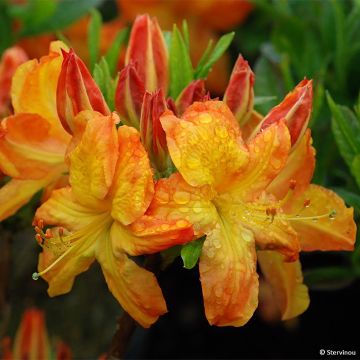
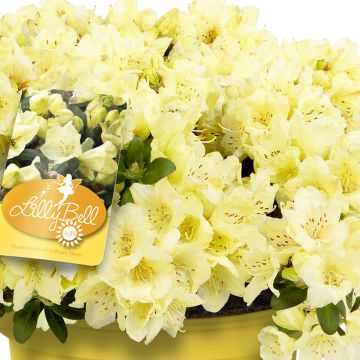
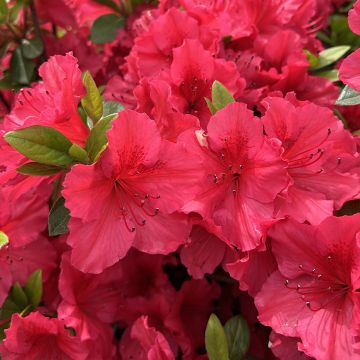
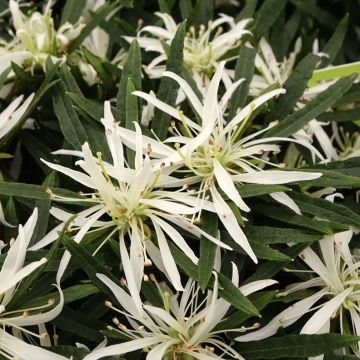
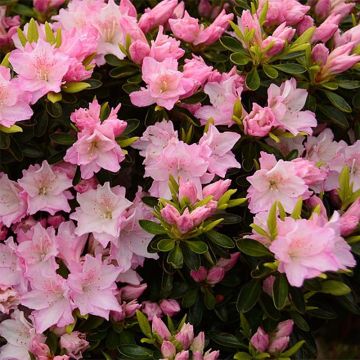
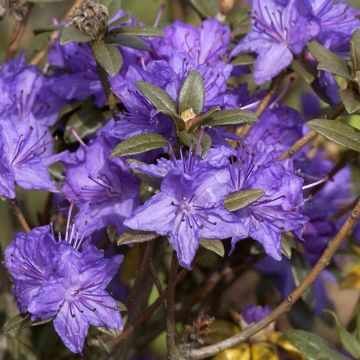
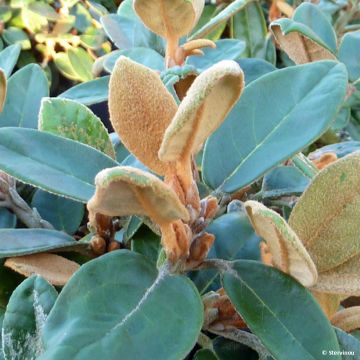
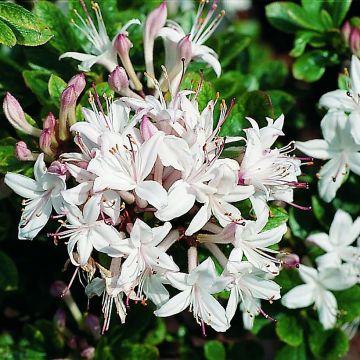
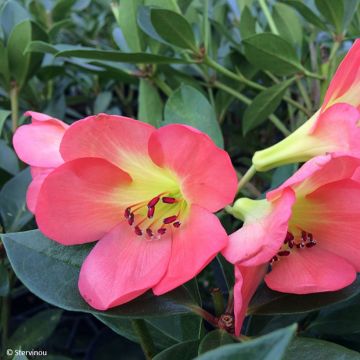
Comments